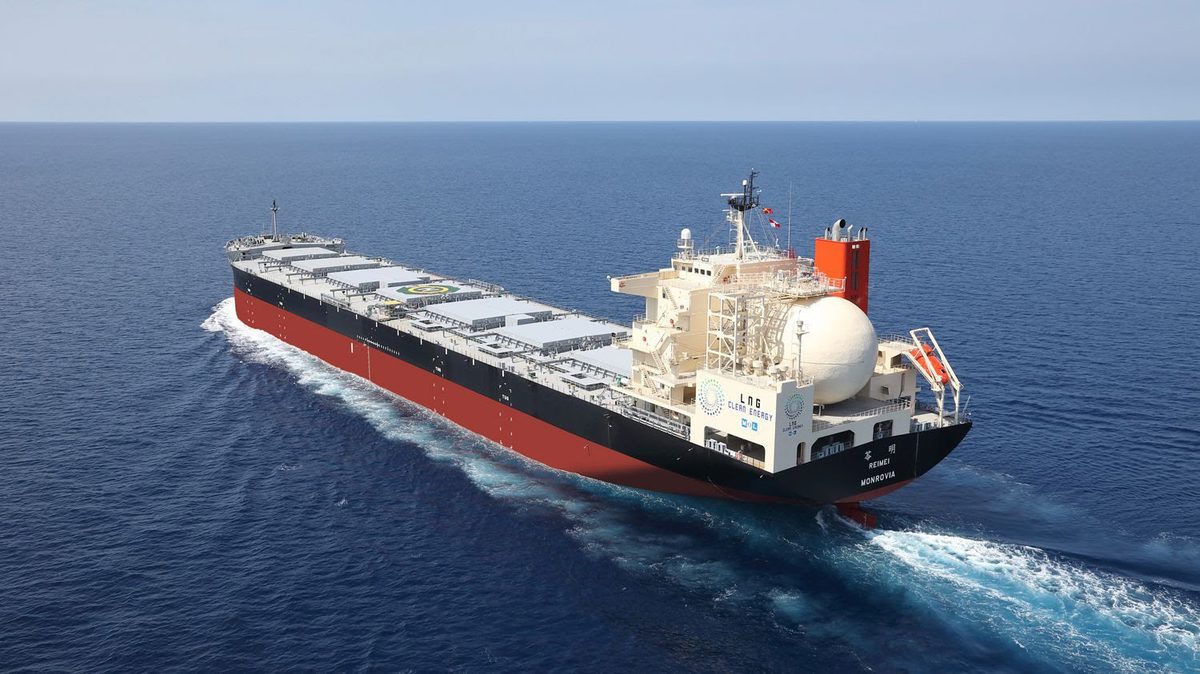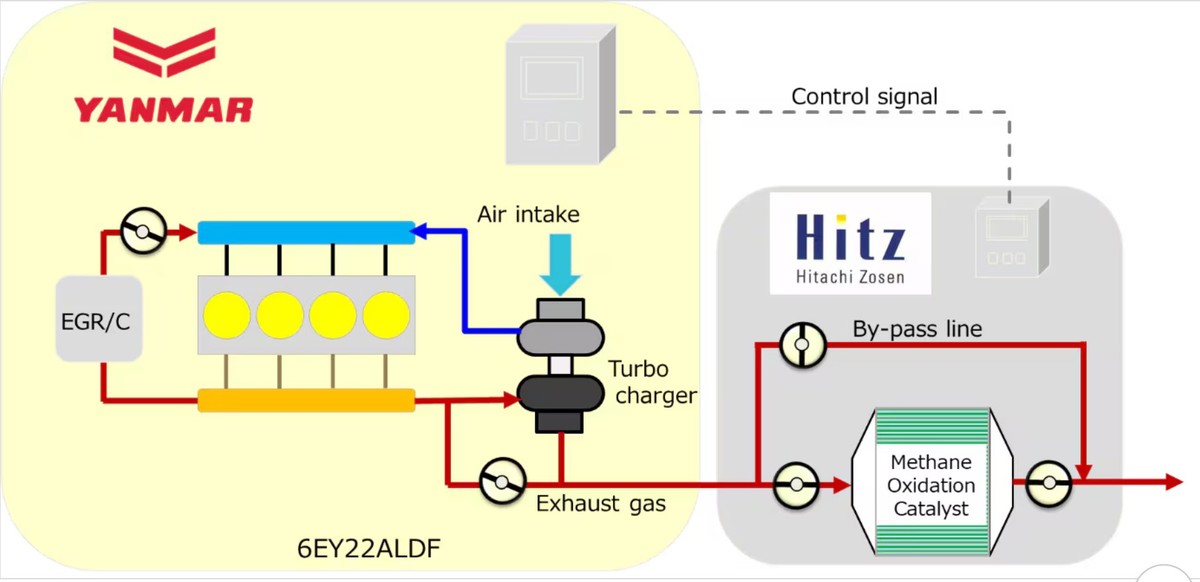Methane slip reduction system achieves 98% cut in MOL vessel trials
A methane slip reduction system installed on a Mitsui O.S.K. Lines (MOL)-operated coal carrier has achieved a 98% reduction in methane slip during sea trials, MOL claimed, citing initial test results.
 IMAGE: MOL-operated LNG dual-fuel coal carrier, Reimei. Namura Shipbuilding
IMAGE: MOL-operated LNG dual-fuel coal carrier, Reimei. Namura Shipbuilding
The system is jointly developed by Japan’s Kanadevia Corporation (Kanadevia) and Yanmar Power Solutions (Yanmar), combining Kanadevia’s methane oxidation catalyst with Yanmar’s engine integration technology.
It comprises an “exhaust gas recirculation system” and a “methane oxidation catalysis system” built into a single module. The unit is installed within the exhaust pipes of LNG dual-fuel engines or generators, where it oxidises unburned methane molecules emitted from the exhaust, ClassNK explained in a note last year.
The unit was installed on an MOL-operated vessel for testing, with an initial target of 70% methane slip reduction rate.
But it achieved a 93.8% reduction at 100% load during land-based trials and 98% at 75% load during sea trials on multiple routes, including Japan-Australia, under “actual operating conditions” with fluctuations in weather conditions.
 IMAGE: Process flow of methane slip reduction system. Yanmar
IMAGE: Process flow of methane slip reduction system. Yanmar
MOL has not disclosed which type of LNG dual-fuel engine was used — an Otto-cycle medium-speed engine, which typically has higher methane slip (around 3.5%), or a diesel-cycle slow-speed engine, which averages just 0.2%.
It should be noted that in practice, methane slip reduction rates can vary depending on a number of factors, such as the transit route, engine load, vessel type and operational profile of the vessel. These factors can affect the engine's combustion efficiency.
The reported results come from a single-vessel pilot and may not reflect actual performance across the wider LNG-fuelled fleet. Further clarity will be needed to understand how the technology performs under real-world conditions across different vessel segments.
The project will continue onboard evaluation and trials through 2026 to verify long-term system performance and catalyst durability, with the aim of commercial rollout in 2027.
By Konica Bhatt
Please get in touch with comments or additional info to news@engine.online





